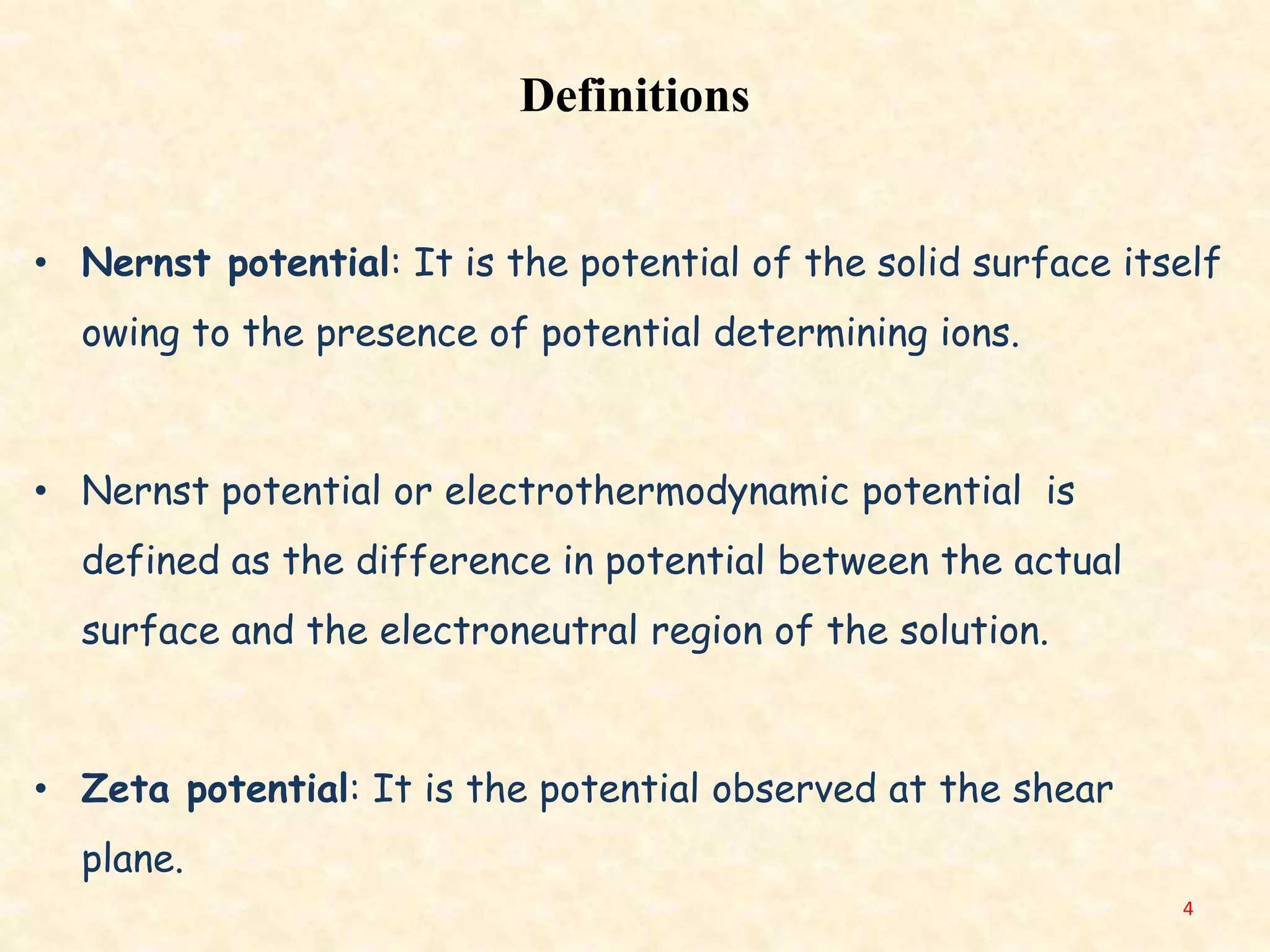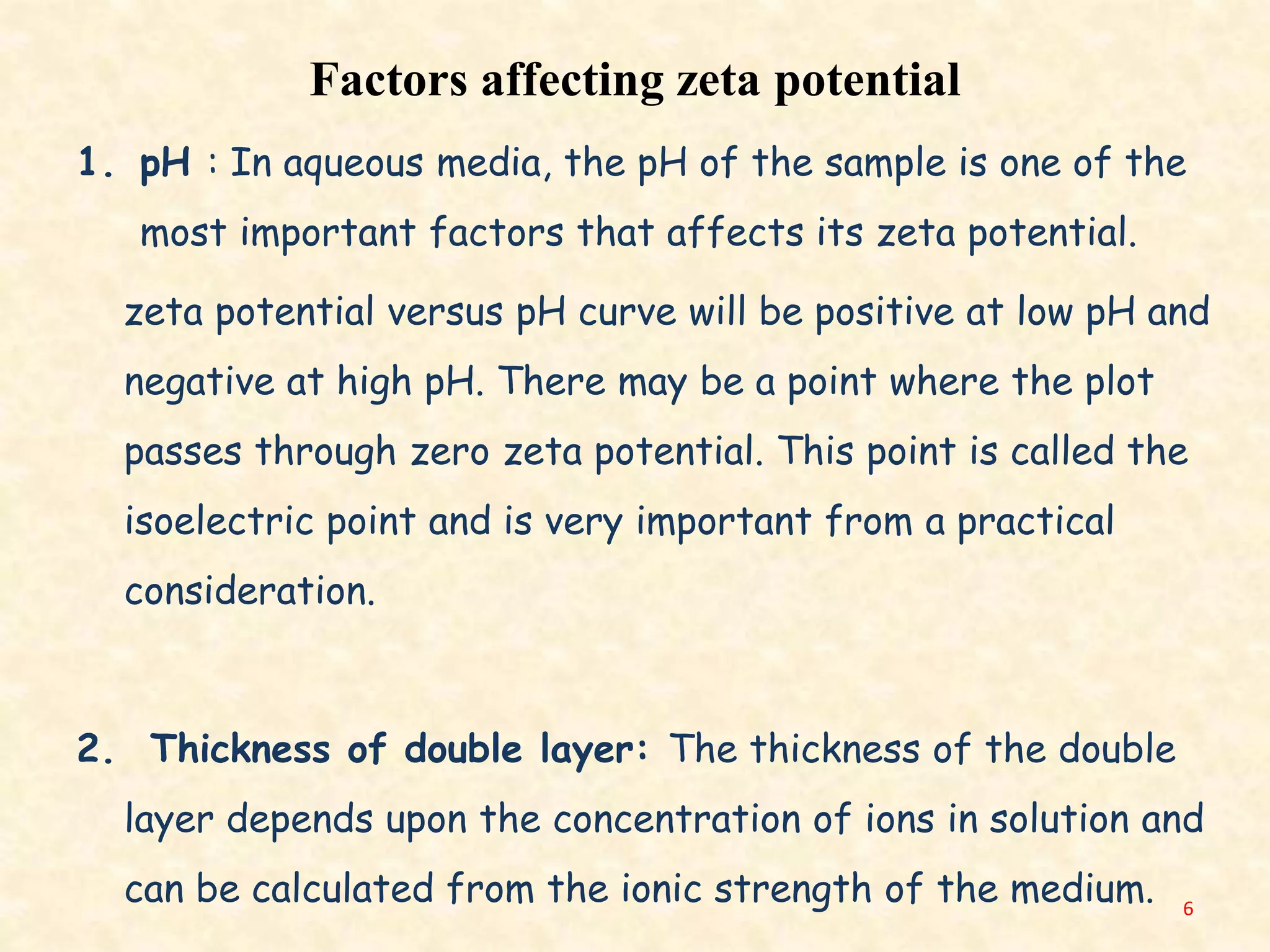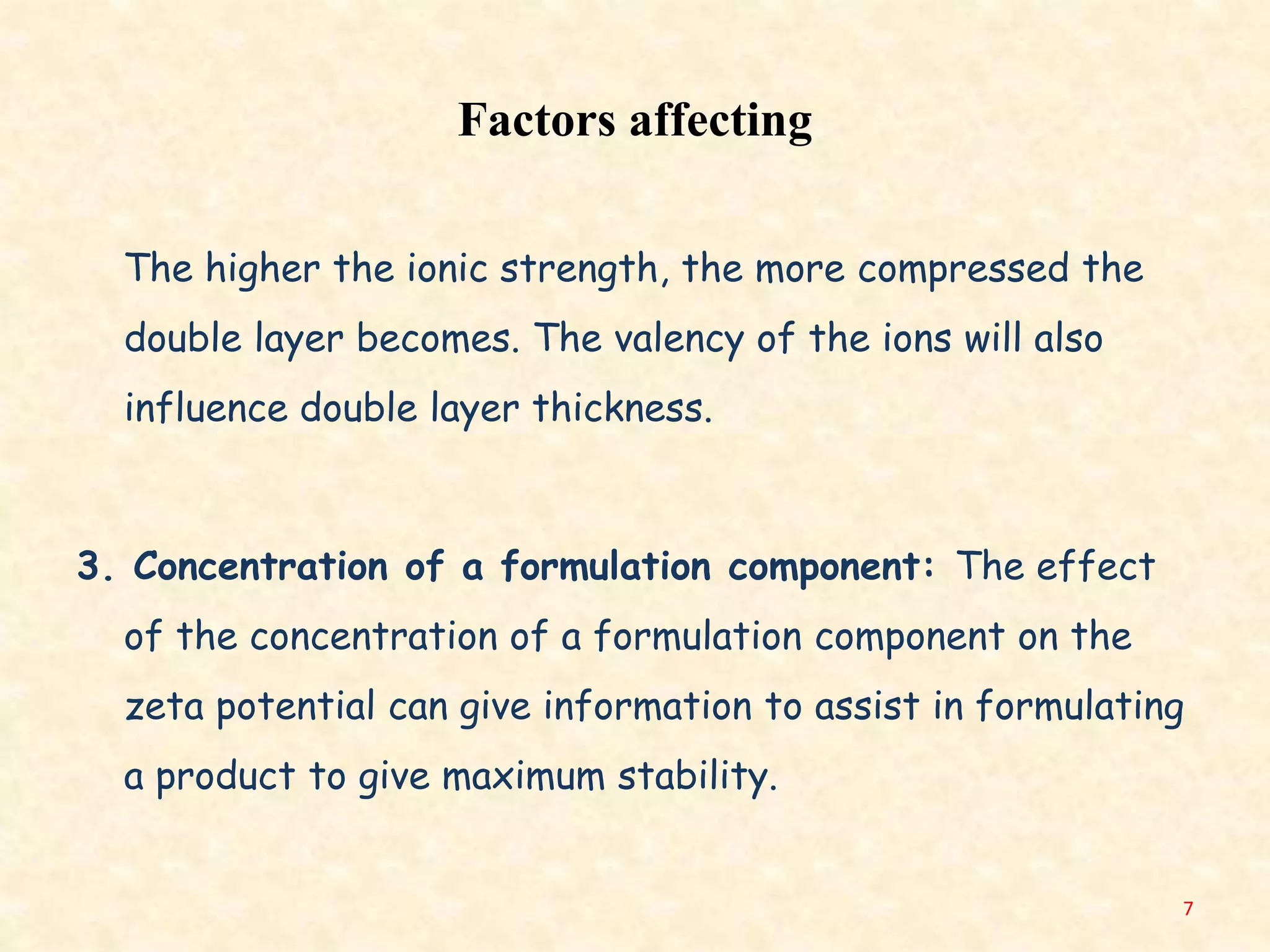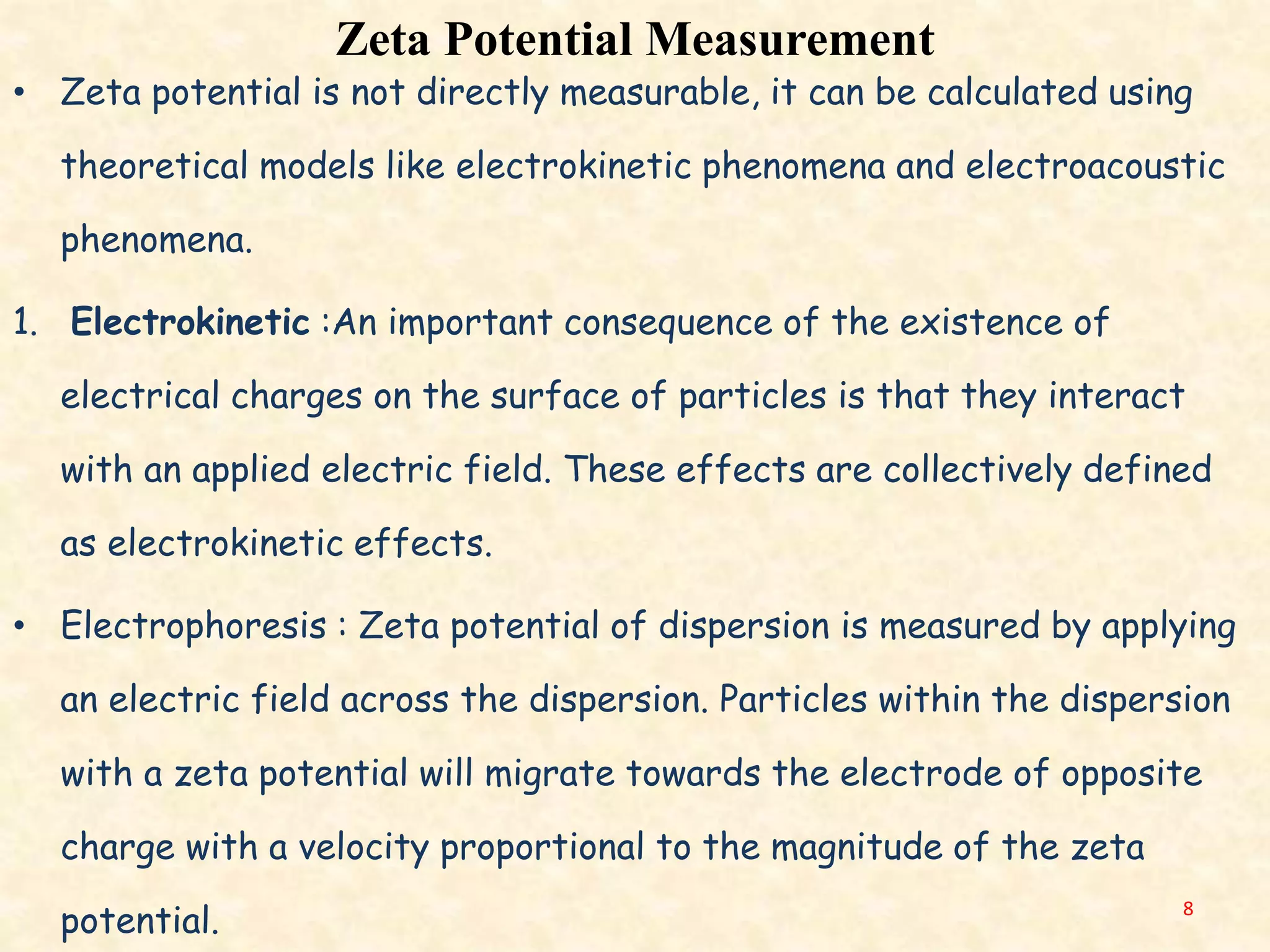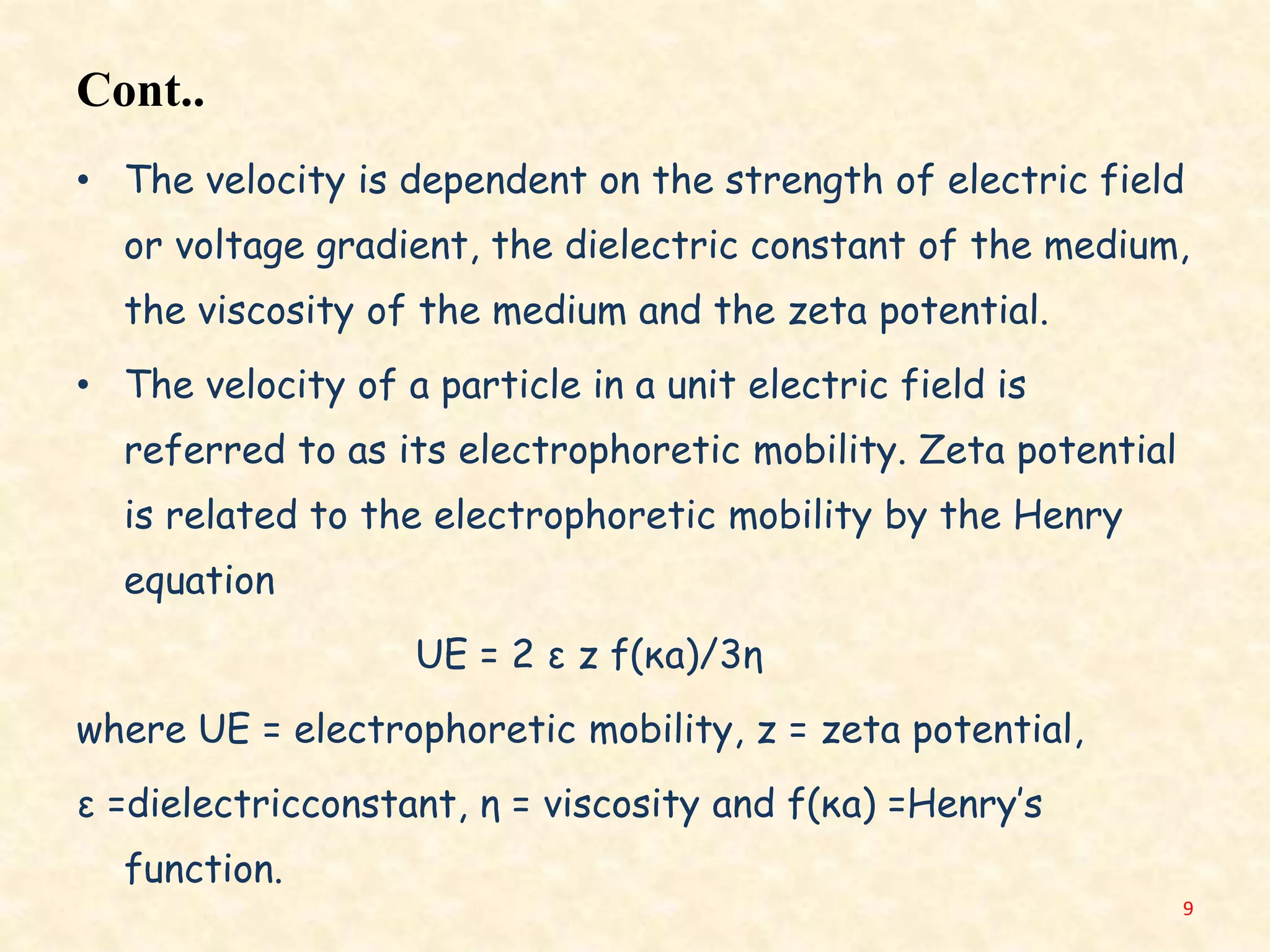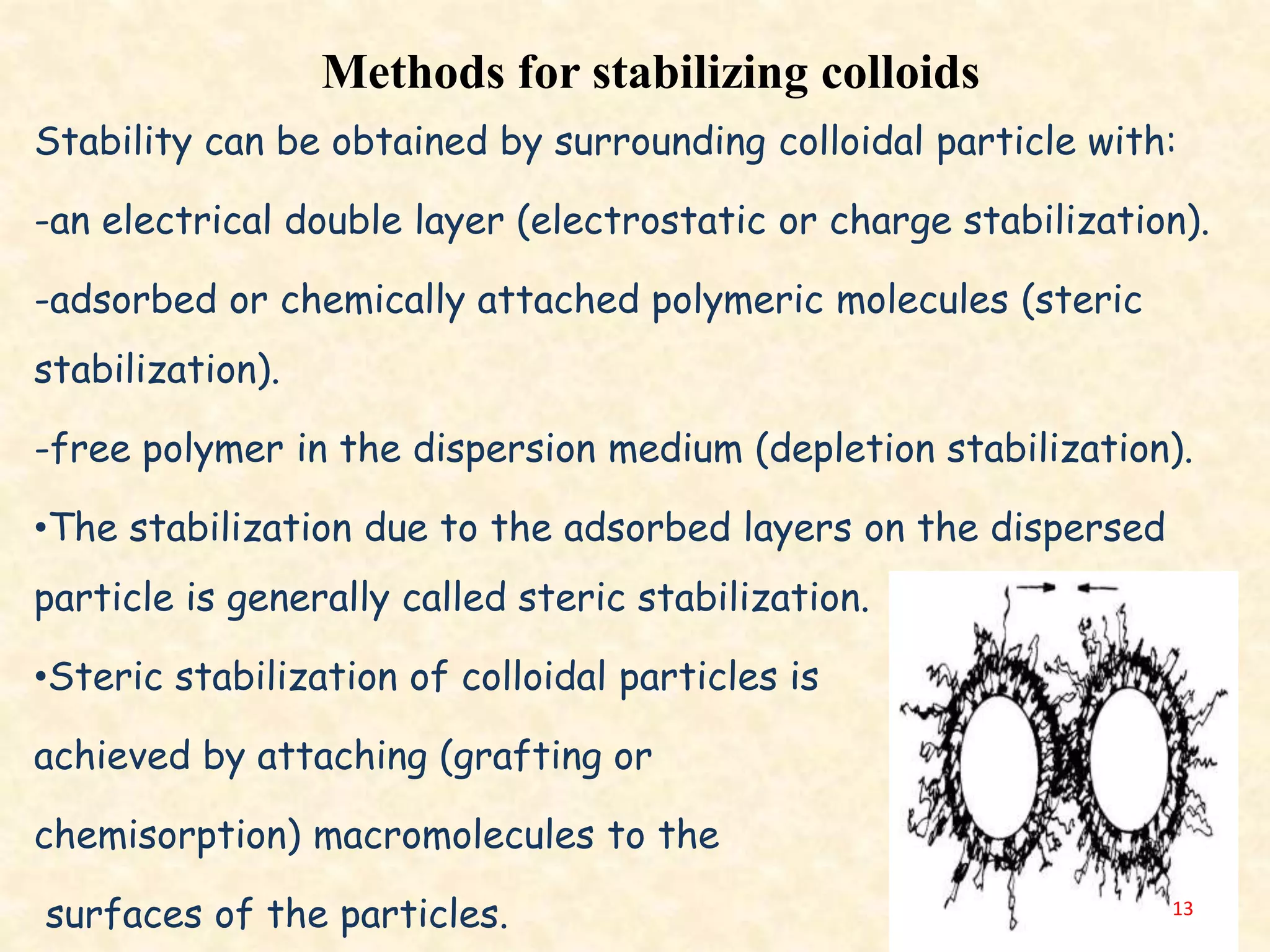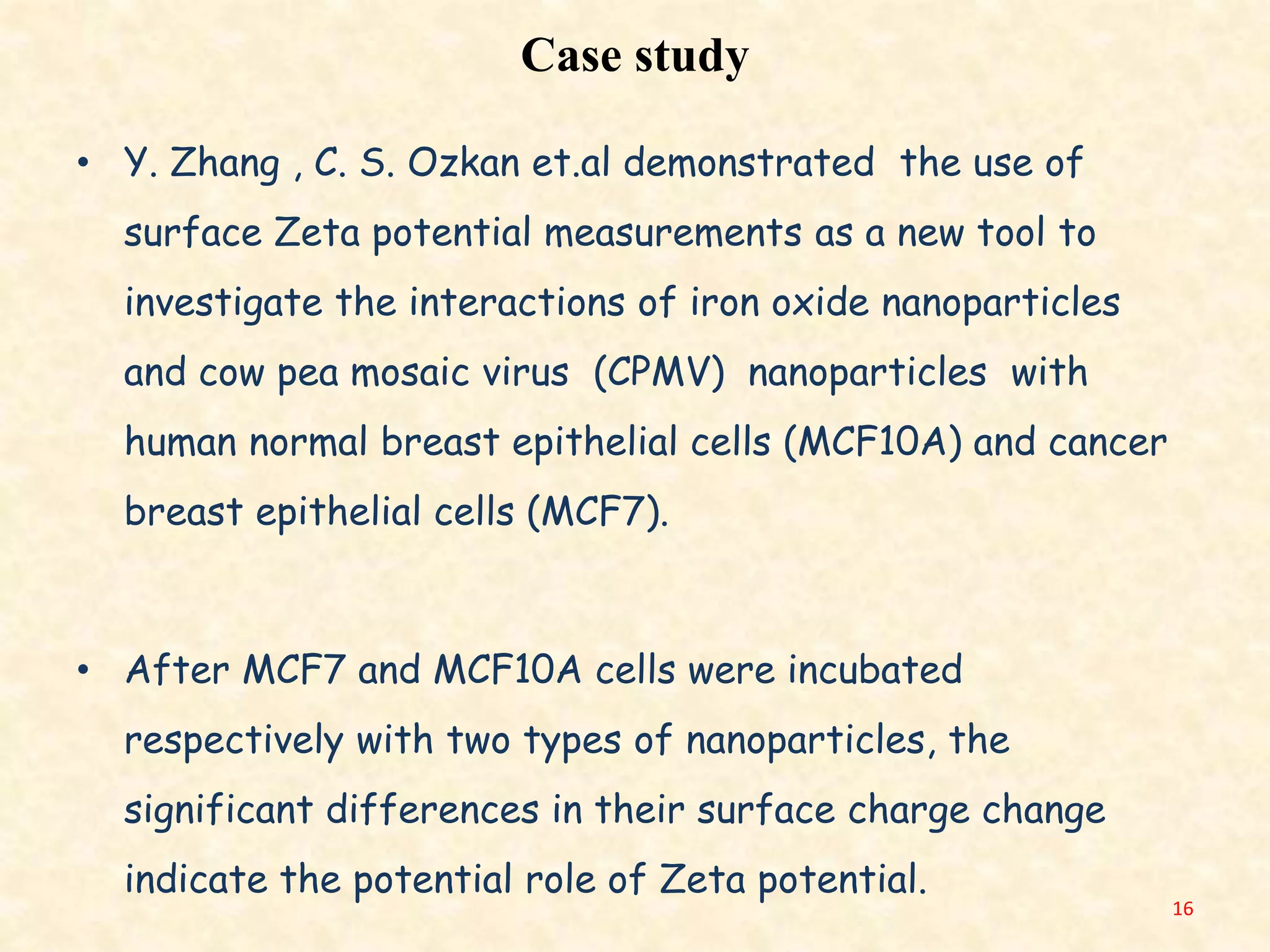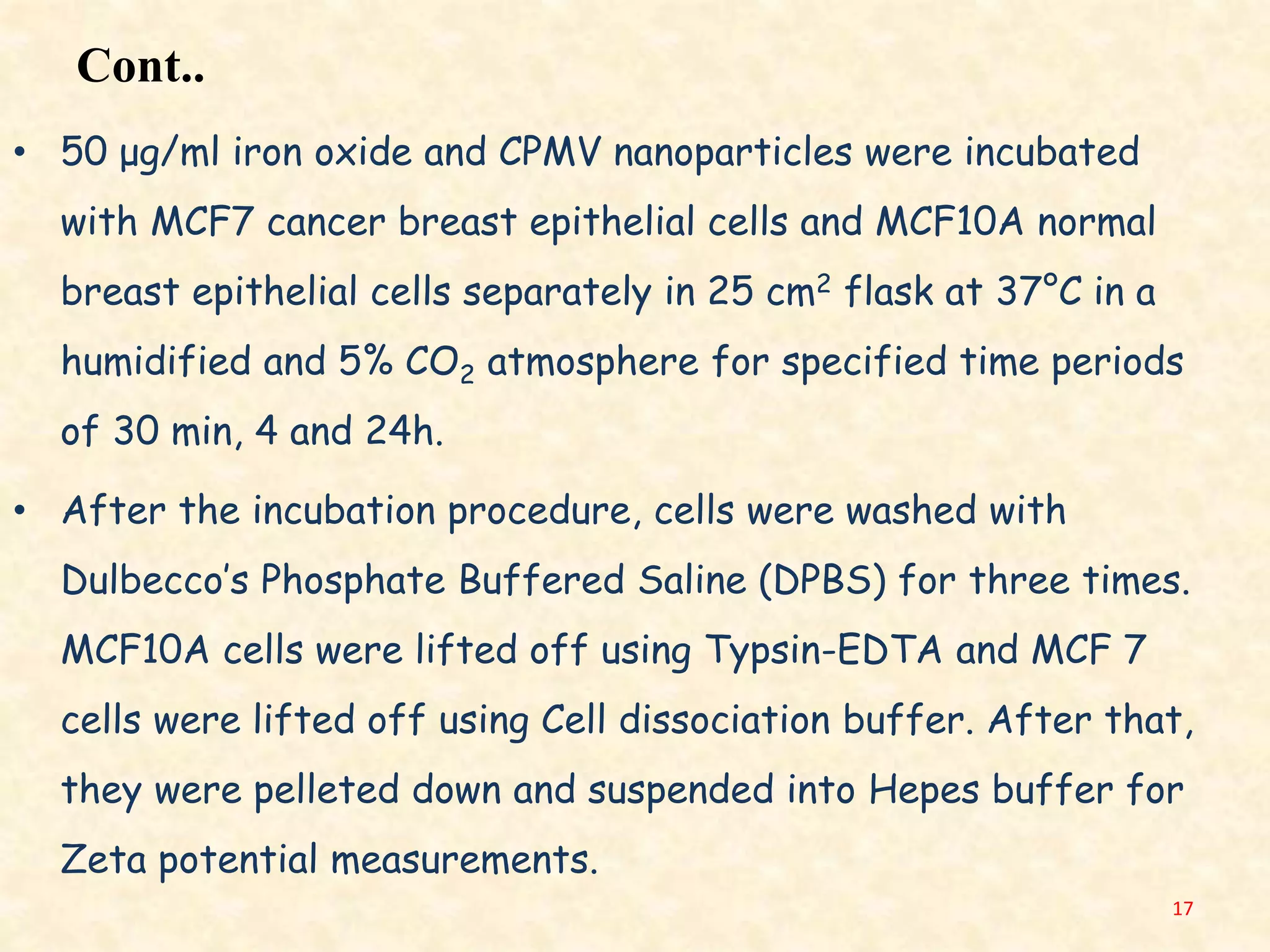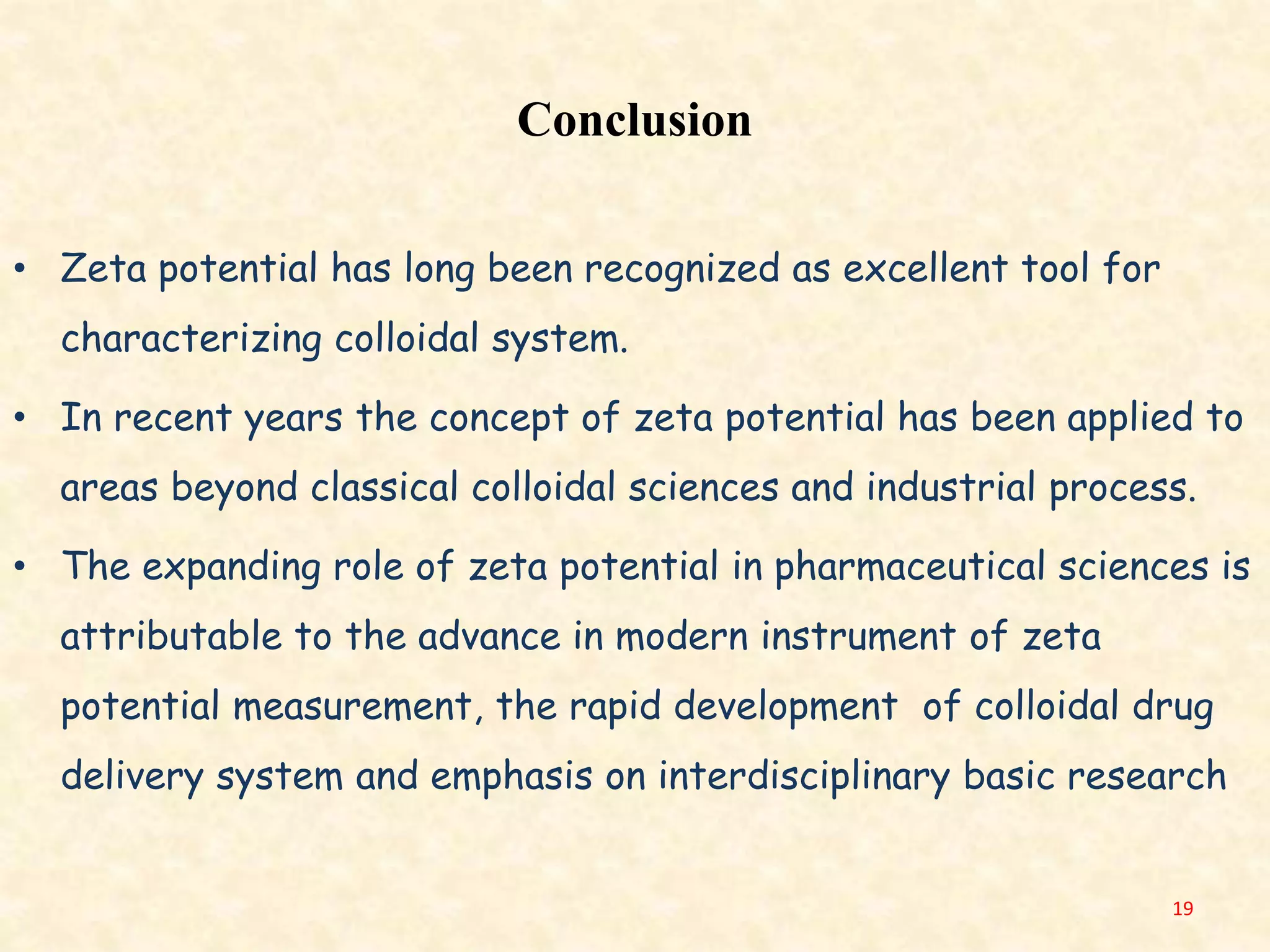This document provides an overview of zeta potential, including:
- Zeta potential is the electric potential at the boundary between the double layer and bulk solution surrounding charged particles suspended in a colloidal system.
- Factors that affect zeta potential include pH, thickness of the double layer, and concentration of formulation components.
- Zeta potential is important for predicting particle interactions and stability in colloidal systems based on DLVO theory of electrostatic repulsion and van der Waals attraction.
- Measurement techniques include electrophoresis and electroacoustic methods to determine particle mobility from which zeta potential is calculated.



